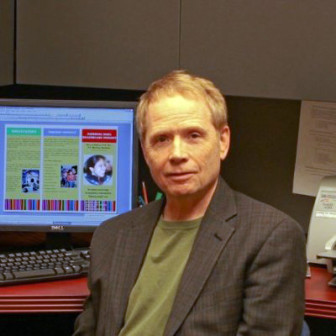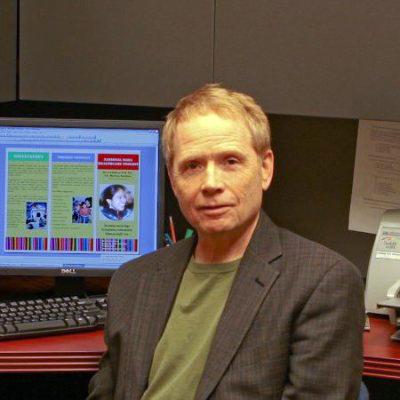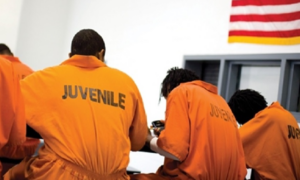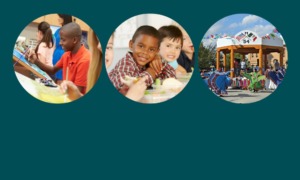 Hundreds of thousands or perhaps several million children with Native American Maya heritage have been born in the United States during the past two decades. Some groups of Maya have established strong communities, and Maya children appear to be adjusting and assimilating into the mainstream of their generation. But Maya children overall continue to face barriers that hinder school success, and a high percentage of Maya youth drop out of school before getting diplomas.
Hundreds of thousands or perhaps several million children with Native American Maya heritage have been born in the United States during the past two decades. Some groups of Maya have established strong communities, and Maya children appear to be adjusting and assimilating into the mainstream of their generation. But Maya children overall continue to face barriers that hinder school success, and a high percentage of Maya youth drop out of school before getting diplomas.
“Maya” specifically refers to people with direct heritage to the Ancient Classical Maya, the civilization that flourished several thousand years ago in Southern Mexico, Guatemala, Belize, El Salvador and Honduras. Many Maya continue to speak native pre-European languages and practice ancient customs.
Like Native Americans elsewhere, the Maya have long struggled to survive under European domination. Maya living in the United States as refugees or immigrants do not entirely escape the disadvantages they previously faced in their home nations. Those include political and social oppression by the dominant Hispanic groups, language barriers and maintaining traditional values. In Guatemala, repression and military violence during the 1980s and 1990s killed several hundred thousand Maya and destroyed hundreds of towns and villages, causing mass exodus and what some have called the “Maya Diaspora.”
Maya children may speak nonstandard or underdeveloped Spanish, which causes confusion and misunderstandings by teachers, medical practitioners and others. This is because Maya languages are primarily spoken in many immigrant homes, not Spanish or English. I have seen Maya children diagnosed as slow or abused at home, when in fact the problem centered only on language.
Maya children also face prejudice from nonindigenous immigrant children who have learned from their parents to see Maya-indigenous culture and values as inferior and backward. Economic poverty, language barriers and the treatment they receive from other children contribute to weak self-esteem and lack of pride in their heritage. Simultaneously the children feel like outsiders in the mainstream world inhabited by nonimmigrant and non-Maya children.
[Related: ‘Teenager’s Handbook’ Advises: Reach Across the Divide, Get Informed about Islam]
Parents struggle for their own survival and have limited means to help the children. In Canton, Georgia, I worked with a local Maya group of parents who wanted to establish a “Maya School.” Parents believed that children had grown disrespectful and purposely uncommunicative, and some of the parents were saddened that children had lost their ability or desire to speak Mayan native languages.
Maya leaders hoped that parents would choose teachers among them to teach their children valued aspects of culture, history and language. The Maya School eventually failed, largely because of lack of resources and time, but also because of lack of agreement among the parents as to what should be taught. In addition, some parents thought it best to minimize Mayan identity and language so the children could better assimilate into life in the United States.
Public schools often don’t know how to help the children of the Maya. Many teachers fail to recognize that Maya children experience particular situations that separate them from other immigrants, I have found. Native American roots remain overlooked or minimized in importance by teachers and others who perceive Maya to be merely Central American or Mexican, or perhaps Hispanic and Latino.
I have talked to many teachers and principals about their Maya populations. Most commonly I find that culture is thought to be the primary hindrance to school success. However, the parents’ poverty, lack of education, distrust of authority and their language barriers are not related to culture, but to historical and contemporary factual conditions.
Indeed, Maya maintain emotional attachments to traditional culture, values and beliefs, but that does not necessarily hinder ambitions to obtain the benefits and respect that come with the promise of education and progress. Barriers facing Maya youth are complex, but these barriers are not primarily based on culture.
On the other hand, Maya culture as defined by their strong family and community values should be seen as assets that teachers and agencies could engage with to help the new generation of Maya-Americans succeed.
Children of the Maya certainly face some serious dilemmas of self-identity. Should he or she identify as Maya or Latino? Or neither? The answer will be difficult for many of the children, but make no mistake; Maya youth have no desire to remain apart or “unassimilated.” Their hopes and dreams point toward inclusion, and their aspirations reach for the opportunities for success long denied to their parents and ancestors.
Alan LeBaron is director of the Maya Heritage Community Project and professor of History and Interdisciplinary Studies at Kennesaw State University.
More related articles:
Young Anti-Racists Celebrate the Unity They See Amid the Hate
Advocates Offer Solutions for Kids at Crossroads of School, Justice System
Freedom School Spirit Infuses Summer Literacy Program
































